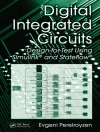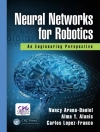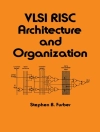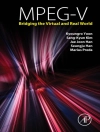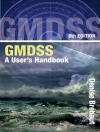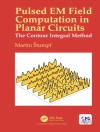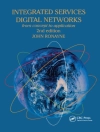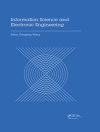This book focuses on providing a detailed and practical explanation of key existing and emerging wireless networking technologies and trends, while minimizing the amount of theoretical background information. The book also goes beyond simply presenting what the technology is, but also examines why the technology is the way it is, the history of its development, standardization, and deployment. The book also describes how each technology is used, what problems it was designed to solve, what problems it was not designed to solve., how it relates to other technologies in the marketplace, and internetworking challenges faced withing the context of the Internet, as well as providing deployment trends and standardization trends. Finally, this book decomposes evolving wireless technologies to identify key technical and usage trends in order to discuss the likely characteristics of future wireless networks.
Spis treści
Preface xi
Acknowledgments xiii
About the Authors xv
List of Acronyms xvii
1. Introduction 1
1.1 Data Networks versus Cellular Networks 2
1.2 The History of the Wireless Internet 3
1.3 The Difference between Wireless and Wired 4
1.4 The Wireless Internet: Different Models 6
1.5 A Review of Layered Communications Models 9
1.6 Wireless Data Networking Technologies at a Glance 13
1.7 Cellular Networking Technologies at a Glance 18
2. The Wireless Ecosystem 29
2.1 Wireless Standardization Process 29
2.2 IEEE 30
2.3 IETF 32
2.4 3GPP 35
2.5 3GPP2 39
2.6 International Telecommunications Union 40
2.7 Wi-Fi Alliance 45
2.8 Wi Max Forum 47
2.9 Bluetooth Special Interest Group 48
2.10 Summary of The Wireless Ecosystem 49
3. Wireless Personal Area Networks 51
3.1 Bluetooth 51
3.2 Zig Bee 71
3.3 Ultra Wideband 106
4. Wireless Local Area Networks 112
4.1 The Original 802.11 Specification 113
4.2 IEEE 802.11b 129
4.3 IEEE 802.11a 134
4.4 IEEE 802.11g 138
4.5 IEEE 802.11e 139
4.6 IEEE 802.11n 142
4.7 IEEE 802.11 Security Models 174
4.8 Other WLAN Technologies 178
4.9 Performance of IEEE 802.11 WLAN Technologies 182
4.10 The Future Direction of IEEE 802.11 192
Additional Reading and Online Resources 194
5. Wireless Metropolitan Area Networks 195
5.1 Fixed Wi MAX Technology Overview 199
5.2 Usage 246
5.3 Evolution 247
5.4 Wi MAX Transition to Cellular Technology 247
Recommended Additional Reading 248
6. Second-Generation (2G) Cellular Communications 250
6.1 Historical Perspectives 251
6.2 Overview of 2G Technologies 252
6.3 2G Deployments 253
6.4 Chapter Overview 254
6.5 An Introduction to GSM 254
6.6 GSM Technology Overview 263
6.7 GSM Physical Layer 303
6.8 GSM Signaling at the Air Interface 308
6.9 GPRS Overview 312
6.10 GSM Security Aspects 345
6.11 EDGE Enhancements 347
6.12 GSM Evolution 351
6.13 GSM Usage 361
Further GSM Reading 363
Acknowledgments 365
7. Third-Generation (3G) Cellular Communications 366
7.1 Universal Mobile Telecommunications System/Wideband Code Division Multiple Access 366
7.2 Mobile Wi MAX 402
7.3 CDMA2000 420
Recommended Additional Reading 468
8. Fourth-Generation (4G) Cellular Communications 469
8.1 Long-Term Evolution 470
8.2 LTE-Advanced 549
8.3 IEEE 802.16M 557
Acknowledgments 558
9. Mobile Internetworking 559
9.1 What Is Meant by Mobile Internetworking? 559
9.2 Network Layer Considerations 560
9.3 Transport Layer Considerations 578
10. Key Wireless Technology Trends: A Look at the Future 593
10.1 MIMO 594
10.2 Multicarrier Modulation 601
10.3 Cognitive Radio 611
10.4 Cross-Layer Radio 615
10.5 Network Coding 618
11. Building the Wireless Internet: Putting It All Together 623
11.1 Dimensions of Performance 624
11.2 Concluding Remarks 630
References 632
Index 650
O autorze
JACK L. BURBANK is a Principal Professional Staff in the
Communications and Network Technologies group at The Johns Hopkins
University Applied Physics Laboratory. He is an Associate Technical
Editor of the IEEE Communications Magazine.
JULIA ANDRUSENKO is a communications engineer at The
Johns Hopkins University Applied Physics Laboratory.
JARED S. EVERETT is an electrical and computer engineer
and a member of both the IEEE Communications Society and the IEEE
Information Theory Society.
WILLIAM T. M. KASCH is a member of the Senior
Professional Staff at The Johns Hopkins University Applied Physics
Laboratory. His interests include IEEE/IETF standards and wireless
network design.


